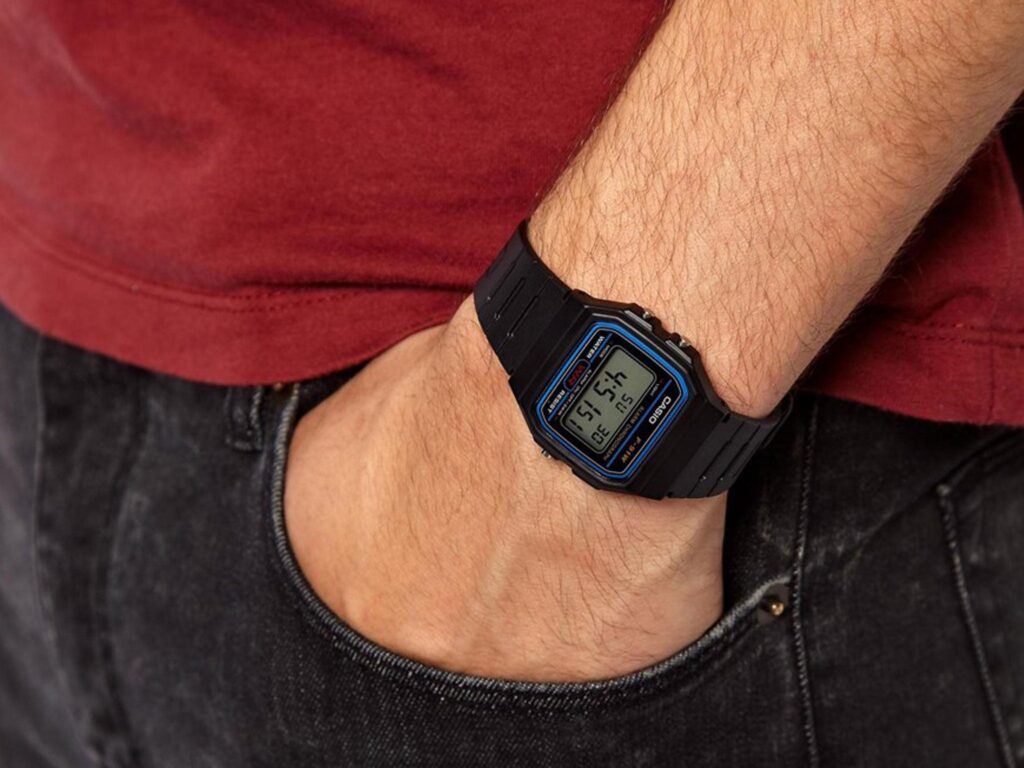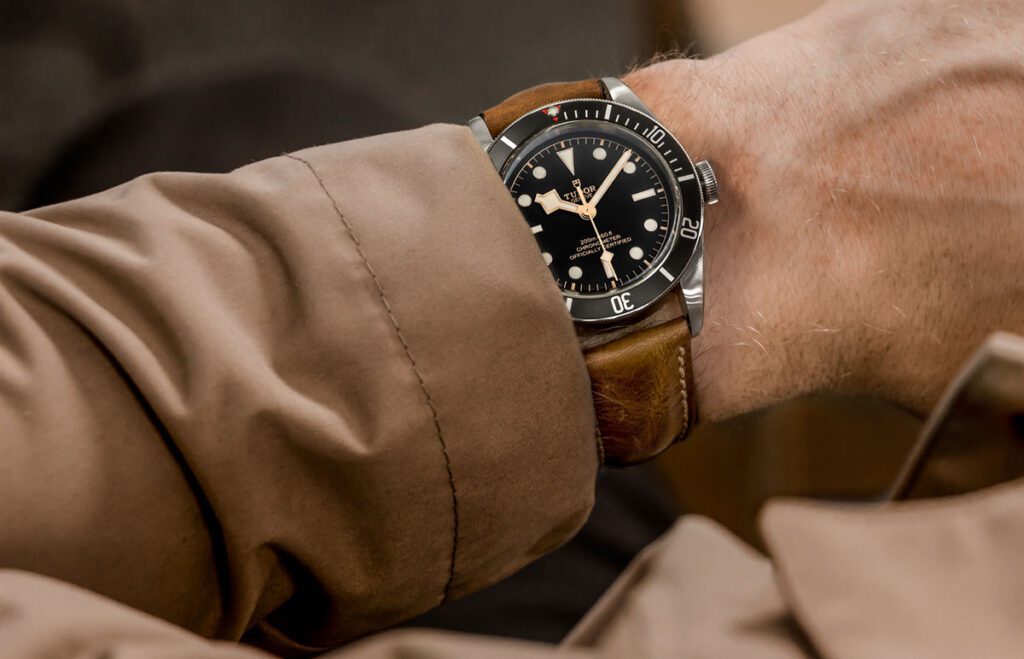How Big Should My Wristwatch Be?

Wristwatch wearing comes with its own nuances of comfort and style. Nowadays, you can get a watch that has a dial the size of a dime—or one that is the size of a softball. So a common question that a lot of jewelry shops and watchmakers receive is, “is this watch the right size for my wrist?”. Well, a simple answer to this question is that any style is great for you—as long as you feel it meets your needs for comfort, style, and utility. This is always a great rule of thumb for any wristwatch purchasing adventure. However, there is a general scale you can follow to fit a wristwatch dial to your wrist. Utilizing this scale accounts for the diameter of the case, as well as the overall circumference of any wrist. Keeping that in mind, we can explore what kind of options are out there. After all, wristwatches come in so much variety that it can be difficult to nail down the best size for daily wear—so here’s some basic info to help you out!
What’s
Out There?
Case diameters have varying sizes, as we’ve touched on above this paragraph (hello from beyond the fourth wall). Before we get to the scaling of watch-to-wrist it might be important to discuss the range of sizes available—in the first place. With watches, generally, measurements like the case diameter, case thickness, and the width of the lug—which holds the band in place—will show up in millimeters (mm). For us U.S. Americans this can be a bit troublesome considering we utilize Imperial Units alongside these millimeter measurements. But before digressing down the finer points of mathematical representations—watch measuring is still pretty simple for consumers.
As it stands, watches
marketed as “women’s” watches are found as small as 16mm (smaller in some rare
cases). On average, though, women’s watches range from 20-30mm. Wristwatches
labeled “men’s” tend to range from 30mm-42mm, depending on whether they’re
luxury or sports watches. Beyond this, due to recent style trends, there are
many men’s watches out there that reach up to 45mm and beyond (think coffee-mug-plate
sized dials). Needless to say, though we’ll say it anyway, there are plenty of
options to choose from. It’s important to be mindful of general case sizes
while shopping for the right fit. Traditionally, men wore the smaller dials for
comfort. It’s only recently that larger and larger watches became
in-vogue—causing a larger gendered rift in what’s right-or-wrong to wear. That
social influence aside, there is nothing too masculine or feminine in what
matters most—having a style that fits at optimum comfort on the wrist.

Sizing
to the Wrist
A “proper” fit, in all honesty, is something that can only be approximated with measurement, taste, and other cultural influences. Fashion in horology and otherwise is a bit of an arbitrary endeavor. That being said, things looking and acting proportionally is a natural tendency that plays well into the subtle nuances of watch wear. To stay looking put-together here’s a good basic scale.
The scale: Measure your wrist, to start. If it measures 6-7 inches in circumference, you’ll want to look for a watch sized 38-40mm in case diameter. If your wrist measures 7-8 inches, it’s worth it to look at 44-46mm cases. Wristwatch case sizes tend to scale up and down by 2mm increments. So if your wrist measures smaller or larger by an inch, or multiple inches, adjust accordingly. For example, if your wrist measures 5-6 inches go for 36-38mm; with 4-5 inch wrists try 34-36mm; 8-9 inches would be 48-50mm; and so on. Essentially, any one less or more inch on wrist circumference will add/remove 2mm—or one watch size—on the scale. It’s a 2:1 ratio in this sliding measurement rule. This scale is especially helpful if you’re shopping online. Hopefully it will help dispel some ambiguity when nailing down the right timepiece.
Other Factors
Case thickness and
the wristwatch strap play into a comfy and proportionate fit. The shaping of
the lugs that hold in the wristwatch band/strap are good to account for when
checking out a new watch style, as well. It’s not very likely that the lugs
will interfere too much with comfort, but some specialty designs will have a
different arch in their design.

In terms of case
thickness, it often scales with the diameter of the watch. If the watch has a
whopping case diameter—it will likely be more thick. If the watch has a smaller
case, you’ll likely end up with a thinner case. Different brands scale
differently, though, based on their design work and individual watch lines.
Chances are, if you enjoy the general size and shape of a certain brand, you can’t
go wrong with going for the tried-and-true. However, there are likely more
options out there based on the measurements of your favorite wristwatch—if
you’re feeling like switching things up.
If there are any material allergies to account for, make sure you have a band that matches up too. Most watch bands/straps have standard lengths when bought from third party vendors—based on average wrist sizes (6.75-8” Women, 7.75-9.5” Men) . These bands can often be interchangeable on plenty of watch lugs. Make sure to measure your wrist and the width of the lug when getting your preferred material band on the watch. Since there aren’t always retail locations nearby to shop these wristwatch-essential materials, having a working knowledge of your needs will help with shopping or special ordering the band of your dreams. For the long haul, matching up a length-appropriate band—with the coziest case diameter and thickness—will keep everything par-for-the-course.
Times Ticking has been in operation for more than 30 years, since 1982. We have performed watch repair for customers both locally and internationally. If it Ticks! We KNOW it! Our team of watch repair technicians have a combined experience in watchmaking of over 120 years.

